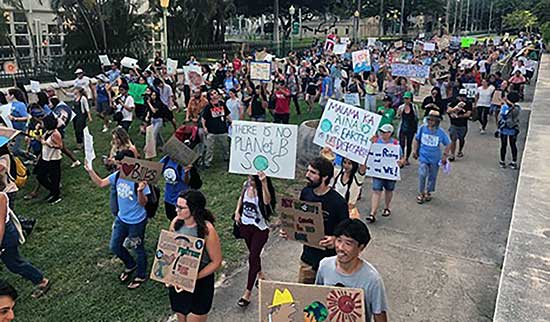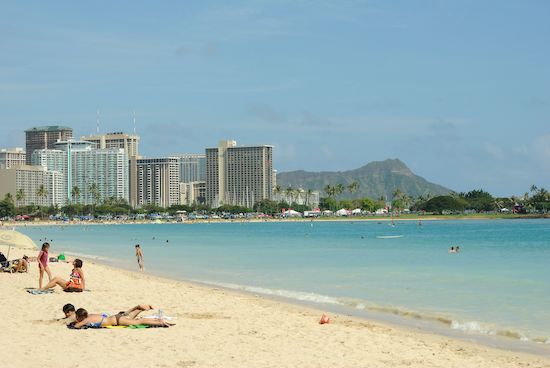
Global Youth Climate Strike
On Sept. 20, more than 4 million people across the globe participated in the Global Youth Climate Strike. In New York, there was an estimated 350,000 people with Swedish climate activist Greta Thunberg helping to lead the march. The Honolulu march was more modest, with around 1,500 participants gathered around the state Capitol. WCC was well-represented with a group of about 15 students, faculty and staff.
Why did we march? A lot of people might question how making signs and protesting will impact climate change. I think it is important because it takes us out of our comfort zones, out of our daily routines and into a space where we can think about the reality of the changing world around us.
For most of us in the developed world, our daily routines, our comfort zones are part of the problem. If we keep doing things the way we have always done them, we will create an uninhabitable Earth for future generations. We need to step away from our daily routines and reexamine how we do things.
This is even more important for our elected leaders who were, with a few exceptions, noticeably absent from the climate march. They make many decisions about where Hawai‘i will get its energy from and how quickly we will transition to renewable energy.
As a predictably blue state, most of our elected leaders acknowledge climate change and have agreed to go carbon neutral for electricity generation by 2045. This is a good start, but what we lack in Hawai‘i is the necessary sense of urgency and willingness to upset the daily routine of business as usual.
The fact that this plan focuses on electricity generation and fails to address transportation illustrates this perfectly. Reducing carbon emissions from cars and plane transportation is much harder politically, technologically and culturally, and so the state has largely ignored it.
Our elected leaders want to fight climate change through small tweaks and adjustments without really rethinking the larger significance of the issues. Culturally in Hawai‘i, no one wants to rock the boat.
For example, a variety of climate change initiatives proposed in the state Legislature last year all failed or turned into working groups to research the problem instead of directly doing something. Our leaders in Hawai‘i havenʻt gotten the memo that we have 11 years to drastically change direction and the time for research and working groups has passed.
If we donʻt figure out what we need to do now, when will we? If the leaders we have elected donʻt have the time to figure out what steps Hawai‘i will take to reduce its carbon emissions, who does?
Although 2045 is better than nothing, it is probably not soon enough. The 2045 goals also are only for electricity and ignore transportation entirely. What will tourism look like in Hawai‘i when air travel is priced to reflect the impact of carbon on the environment? Are we ready for the stronger, wetter and slower moving hurricanes that are becoming the new normal? If we are not, then we need to start to do things differently and elect leaders who are willing to challenge business as usual.
by Christian Palmer, Special to Ka ‘Ohana





